The Galápagos Islands are a unique ecosystem home to many rare and exciting species. Of the 174 bird species found in the Islands, 26 are endemic, meaning they are found nowhere else in the world. Many of these Galápagos birds have developed fascinating adaptations to survive in the Galápagos, evolving into species unlike any others.
1. Blue-Footed Booby

Blue-footed boobies are not born with blue feet.
©tamara bizjak/Shutterstock.com
Perhaps the most iconic bird in the Galápagos, the blue-footed booby is easily identified by its bright blue feet. Their name derives from the Spanish word “bobo,” which means foolish. This is because they walk awkwardly on land, giving them a goofy look. However, they are excellent swimmers and incredibly agile in the water. There are an estimated 40,000 breeding pairs of boobies in the world, with the largest concentration in the Galápagos.
2. Magnificent Frigatebird

Since they aren’t waterproof, frigatebirds skim over the top of the water to grab jumping fish, or harass other birds into regurgitating their food.
©iStock.com/Clay Clark
The magnificent frigatebird is the largest frigatebird species with a wingspan of 7-8 feet. Adult birds are all black and males have large red sacs on their necks. During mating season, they inflate these sacs to attract females. Frigatebirds do not have waterproof feathers, so they do not dive underwater to get food like other seabirds.
3. Galápagos Mockingbird

Galápagos mockingbirds will feed on the blood of wounded seabirds.
©Don Mammoser/Shutterstock.com
Endemic to the Galápagos, the Galápagos mockingbird is one of four mockingbird species on the Islands. They are the most common mockingbirds, they are found on all the islands except for San Cristobal, Floreana, and Española. Galápagos mockingbirds are bold, curious birds with little fear. They are omnivores and feed primarily on seeds and insects.
4. Lava Gull
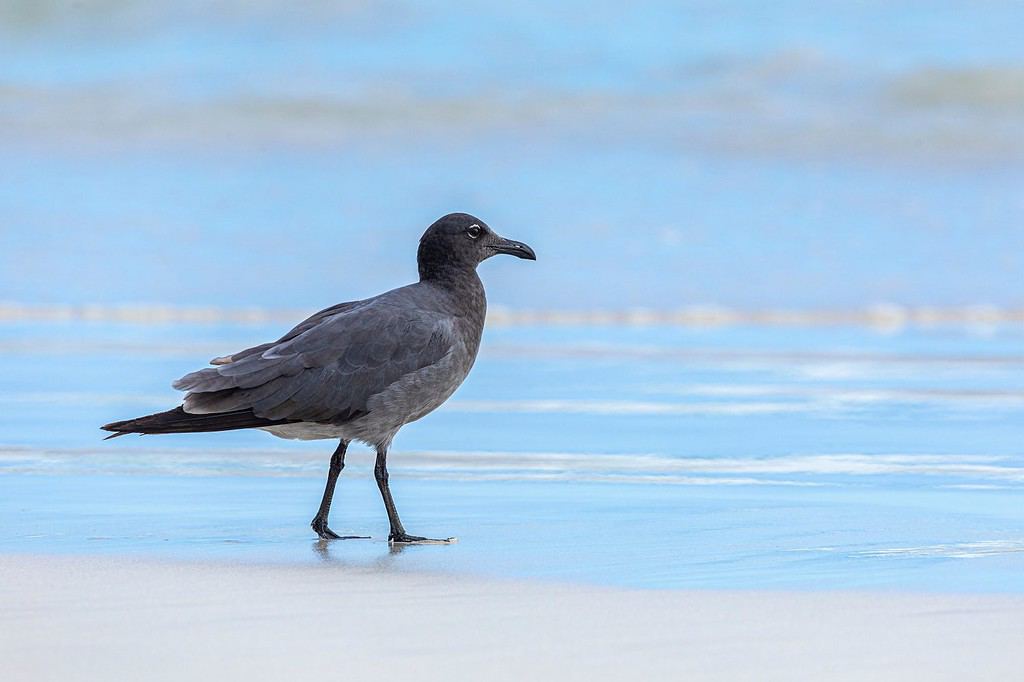
Lava gulls are omnivores.
©Ana Dracaena/Shutterstock.com
You won’t find many lava gulls around: it is the rarest gull in the world. It is estimated that there are fewer than 300 breeding pairs in the world. Endemic to the Galápagos, these gulls are omnivores that steal eggs from other birds’ nests. They are members of the “hooded gull” group and are closely related to the laughing gull.
5. Nazca Booby
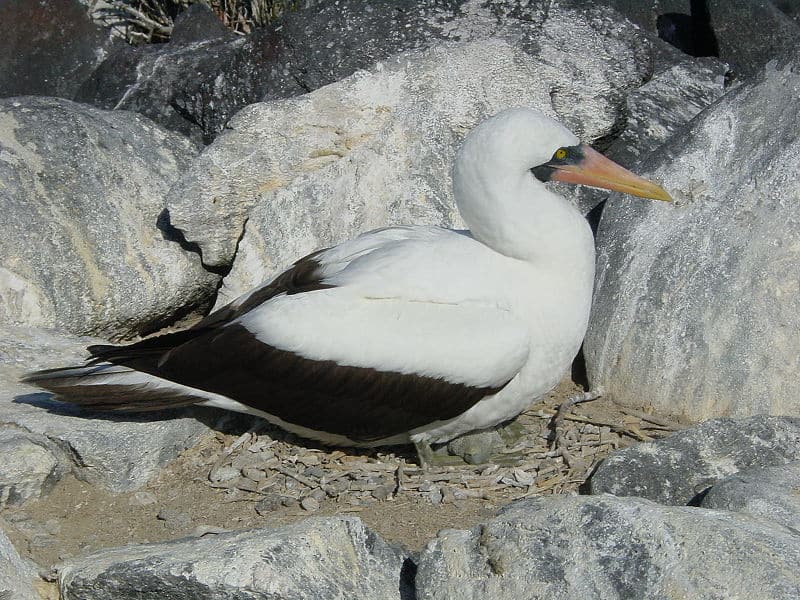
These boobies can live up to 23 years.
©ProfessorX - Public Domain
The Nazca booby is the largest of the three Galápagos booby species. Unlike the blue-footed booby, Nazca boobies have gray feet and bright yellow beaks. Nazca boobies lay two eggs in a clutch, but only one will survive. The fitter baby will eventually commit “siblicide” and push the weaker one out of the nest to die.
6. Galápagos Dove
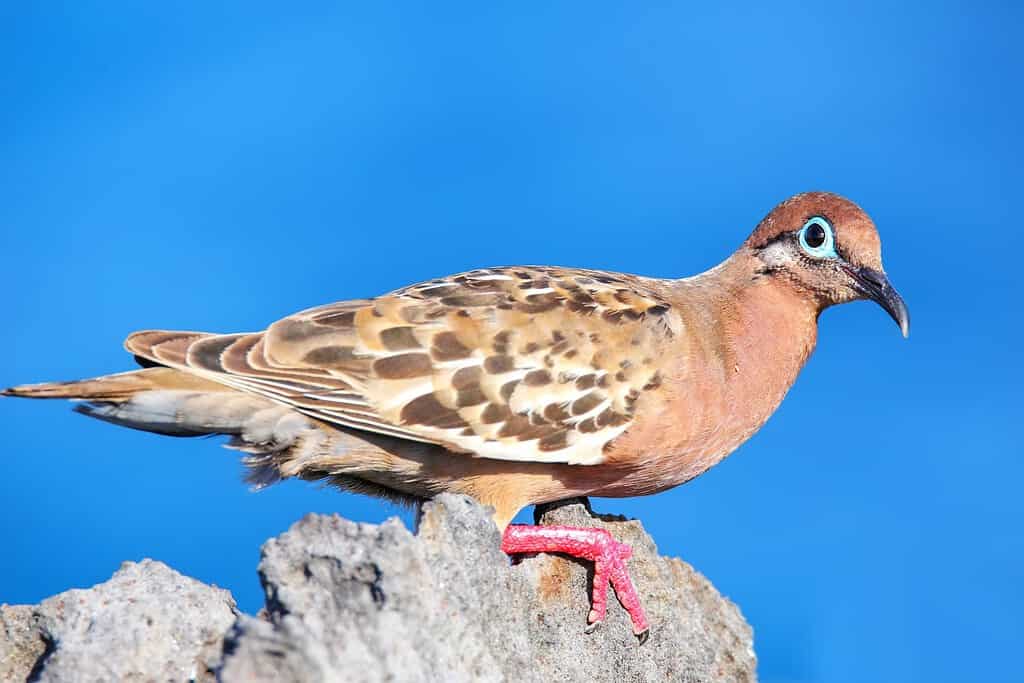
Galápagos doves eat seeds, cactus flowers, and caterpillers.
©Don Mammoser/Shutterstock.com
Another endemic species, the Galápagos dove is found in semi-open, arid scrublands across the Galápagos. These doves are very curious and calm. They are distinctive in coloration, with reddish-brown heads, red legs, and blue circles around their eyes.
7. Galápagos Hawk

These hawks are closely related to red-tailed hawks.
©SL_Photography/iStock via Getty Images
The Galápagos hawk is the top of the food chain on the Islands. They are skilled hunters and eat invertebrates, lizards, small marine and land iguanas, rats, boobies, and insects. Sadly, the population of the. Galápagos hawk is vulnerable, with less than 500 birds left.
8. Flightless Cormorant

The Galápagos cormorant’s wings are one-third the size they’d need to be to fly.
©pilesasmiles/iStock via Getty Images
There are 29 cormorant species in the world and the flightless cormorant is the only one that can’t take to the skies. Unable to fly, this Galápagos cormorant is a skilled swimmer that dives to catch octopus and eel. Awkward on land, they use their tiny wings for balance when they waddle around on land.
9. Galápagos Petrel
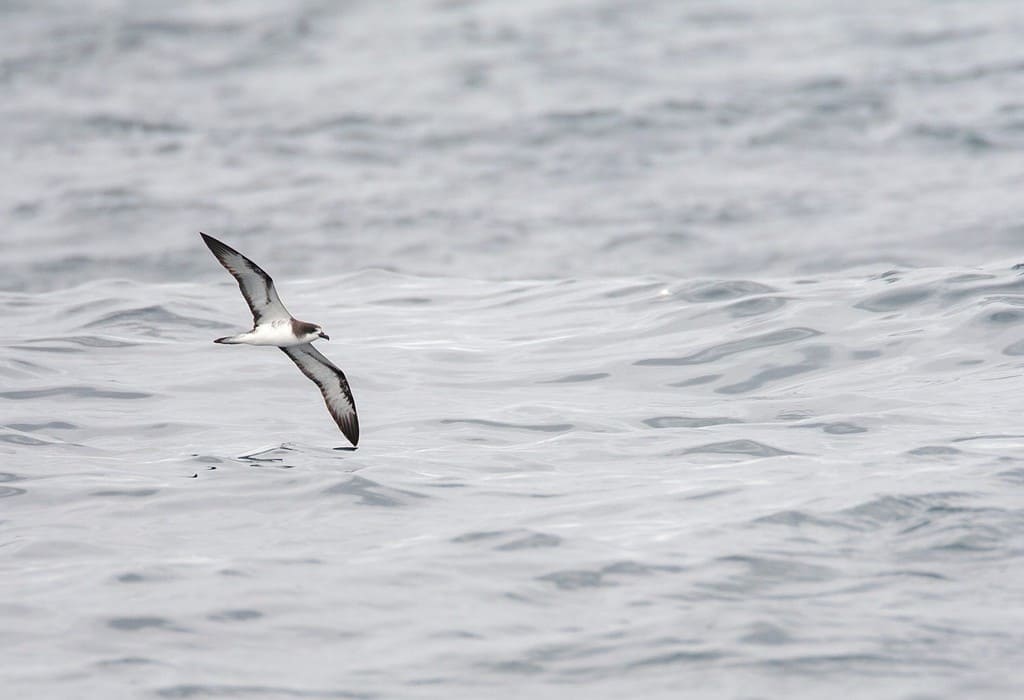
The petrel is critically endangered.
©Agami Photo Agency/Shutterstock.com
Galápagos petrels spend the breeding season on land in the Galápagos but don’t expect to see many outside that timeframe. When the nests are empty, the petrol ventures far out over the eastern Pacific Ocean, rarely coming to land. It is one of the Galápagos’ six endemic seabird species.
10. Swallow-Tailed Gull
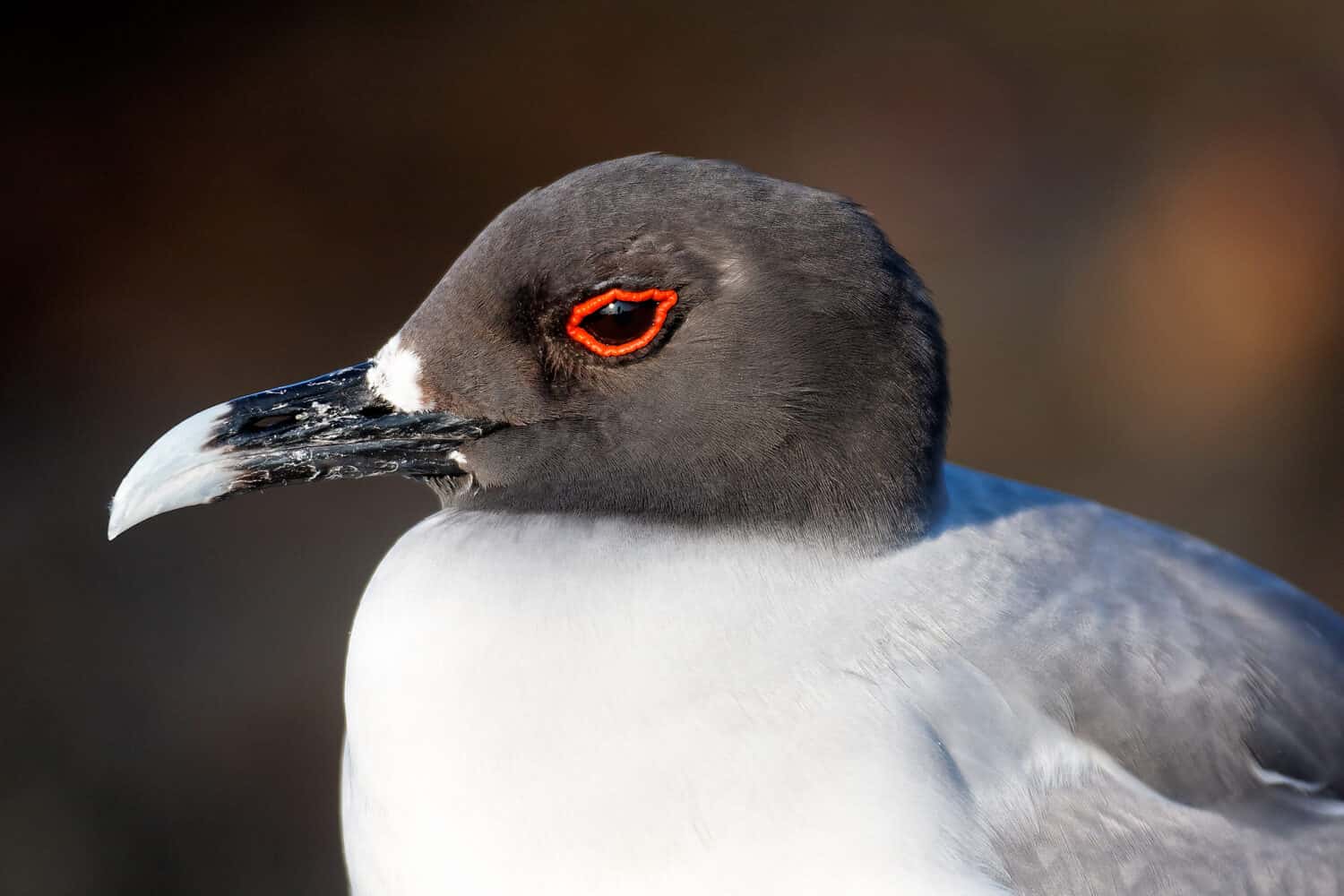
Swallow-tailed gulls hunt at night to avoid frigatebirds.
©goran_safarek/Shutterstock.com
Don’t expect to see the swallow-tailed gull flying around during the day. The world’s only nocturnal gull, the swallow-tailed gull evolved to be active at night to avoid competition from other birds such as frigatebirds. To see in the dark, this bird has larger eyes than any other gull species. The swallow-tailed gull is endemic to the Galápagos.
11. Finches
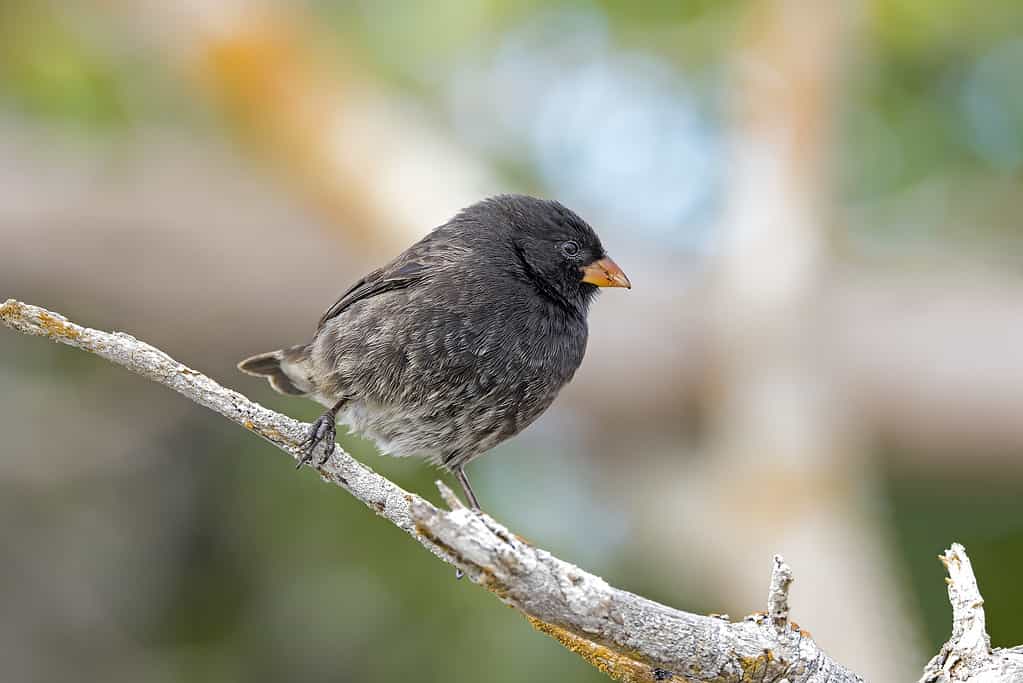
A finch’s beak shape can help identify their diet.
©Franz Schallmeiner/iStock via Getty Images
Darwin’s finches are the basis for Darwin’s theory of evolution and natural selection. This group is composed of 18 different finch species, including 17 that are endemic. Each species is slightly different, with varying beak shapes and sizes that have evolved to help with their unique diets. Some of the finches eat seeds, while others eat insects or cacti.
12. American Flamingo

The flamingos found in the Galápagos are actually American flamingos.
©Jckfreder/Shutterstock.com
The American flamingos are social birds and often congregate in large groups. They feed on small water plants and crustaceans by Floreana and Isabela Islands. This is how they get their vibrant pink coloring.
13. Waved Albatross
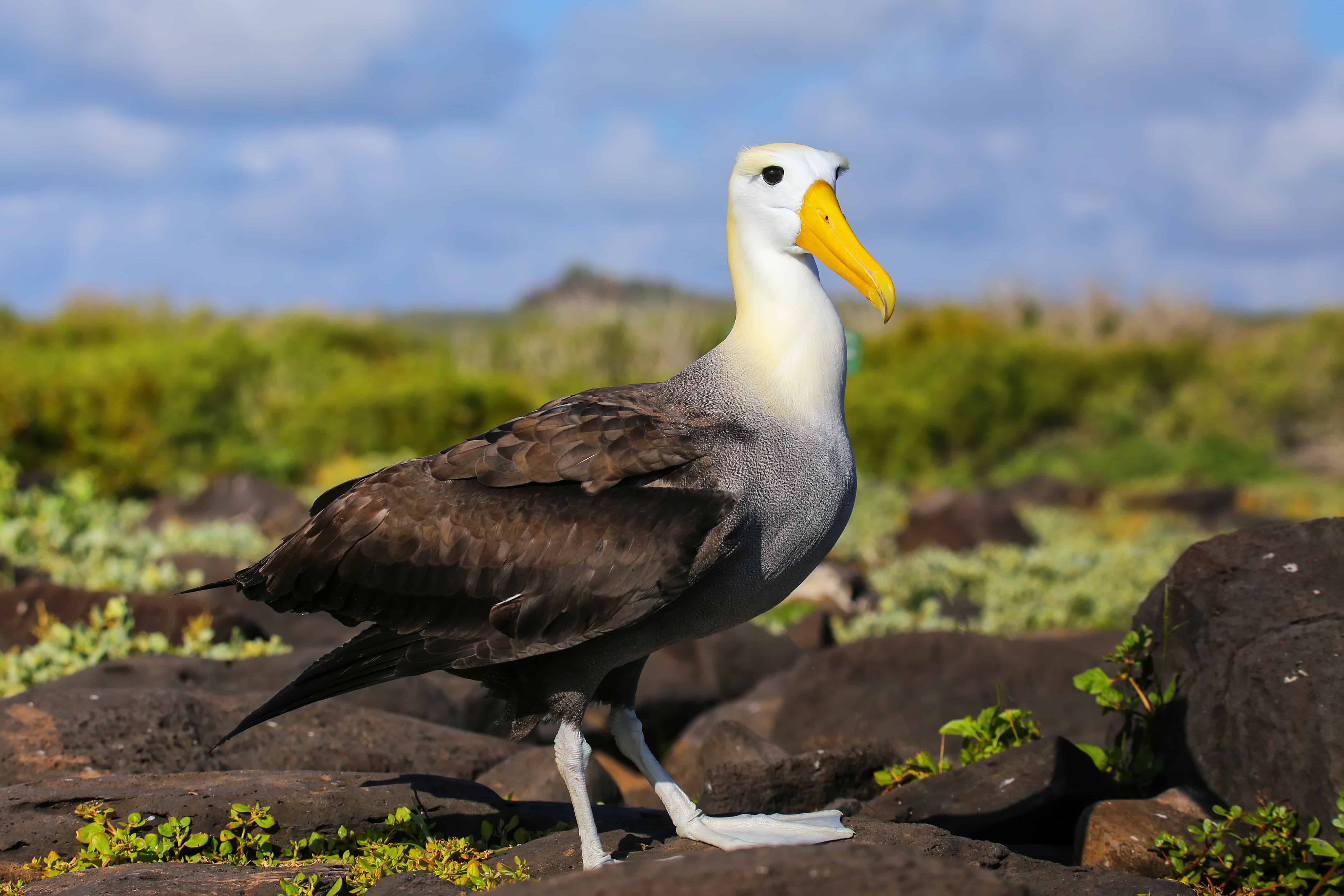
Waved
albatross
are critically endangered.
©Don Mammoser/Shutterstock.com
With an impressive 7-8-foot wingspan, the waved albatross is the biggest bird in the Galápagos. They have elaborate courtship dances. If the dance is successful, the pair of albatross mate for life. These amazing flyers can spend years flying out at sea without touching land.
14. Lava Heron

Lava herons are monogamous.
©WMarissen/iStock via Getty Images
Endemic to the Galápagos, the lava heron lives in mangrove swamps and intertidal zones. They nest along the lava rocks along the coastlines. During the breeding season, the males’ legs turn bright orange to attract a mate.
15. Galápagos Penguin

These penguins go through two molts per year.
©Joanne Wastchak/ via Getty Images
The Galápagos penguin is the only penguin species found north of the equator. The endemic bird is the third-smallest penguin species in the world and the smallest South American penguin. They are fast swimmers and can reach speeds of up to 15 miles per hour.
16. Red-Tailed Tropicbird
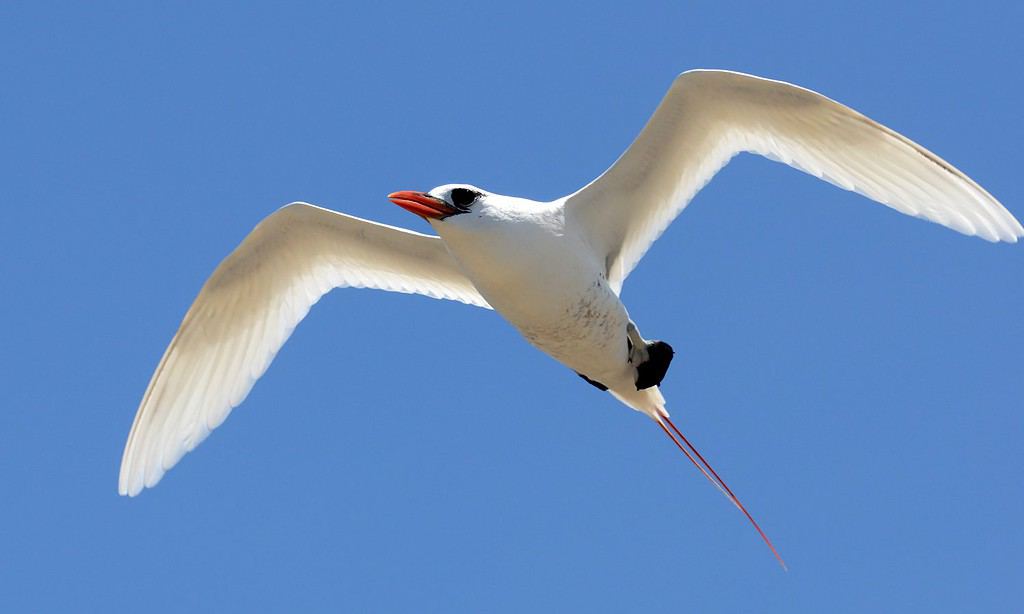
Their tail streamers measure up to 14 inches long.
©Agami Photo Agency/Shutterstock.com
The gorgeous red-tailed tropicbird is white with a bright orange beak and long forked tail feathers. Tropicbirds are sea birds that feed on fish and squid. They will dive from as high as 130 feet in the air in pursuit of prey.
The photo featured at the top of this post is © BlueOrange Studio/Shutterstock.com
Thank you for reading! Have some feedback for us? Contact the AZ Animals editorial team.






